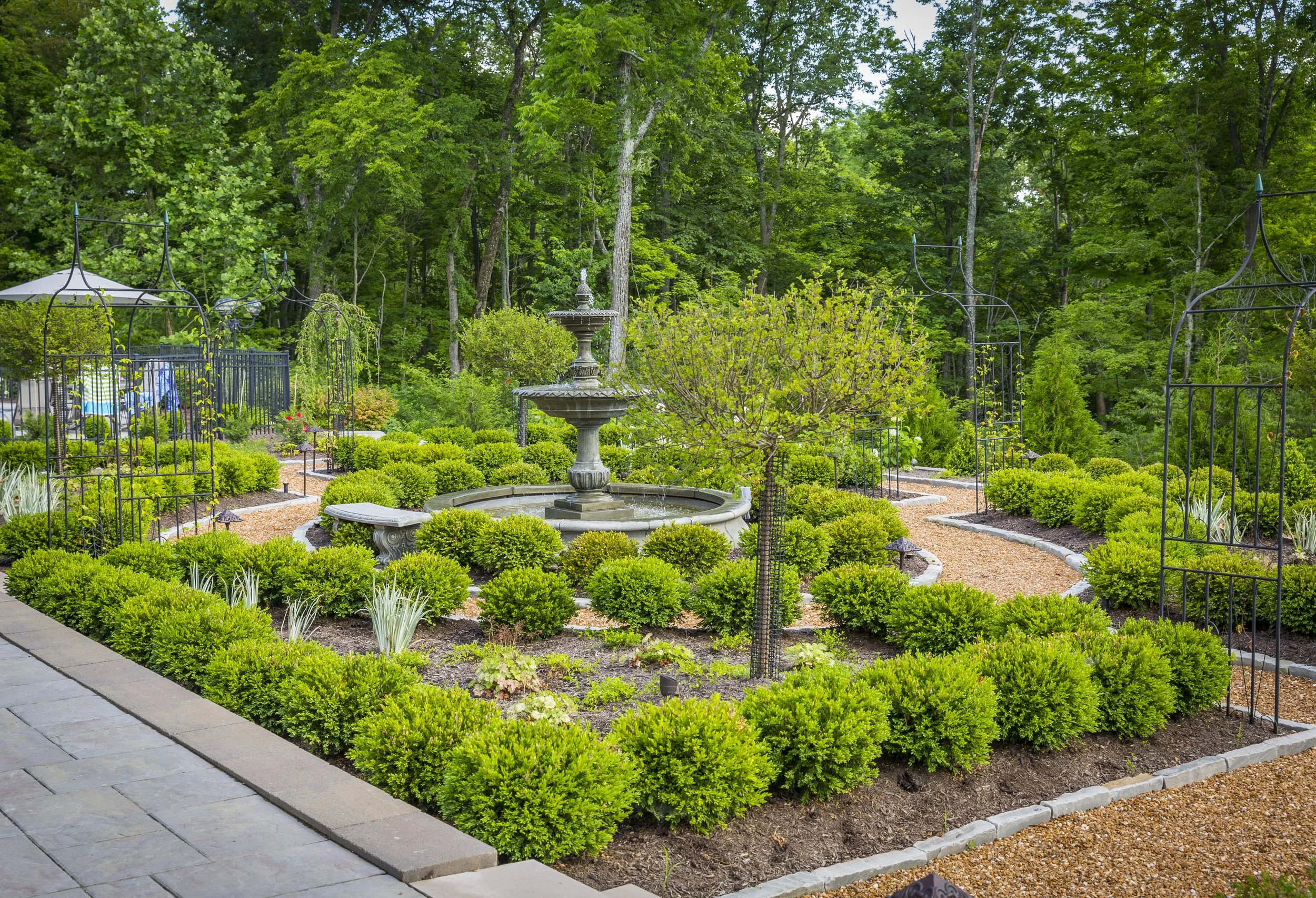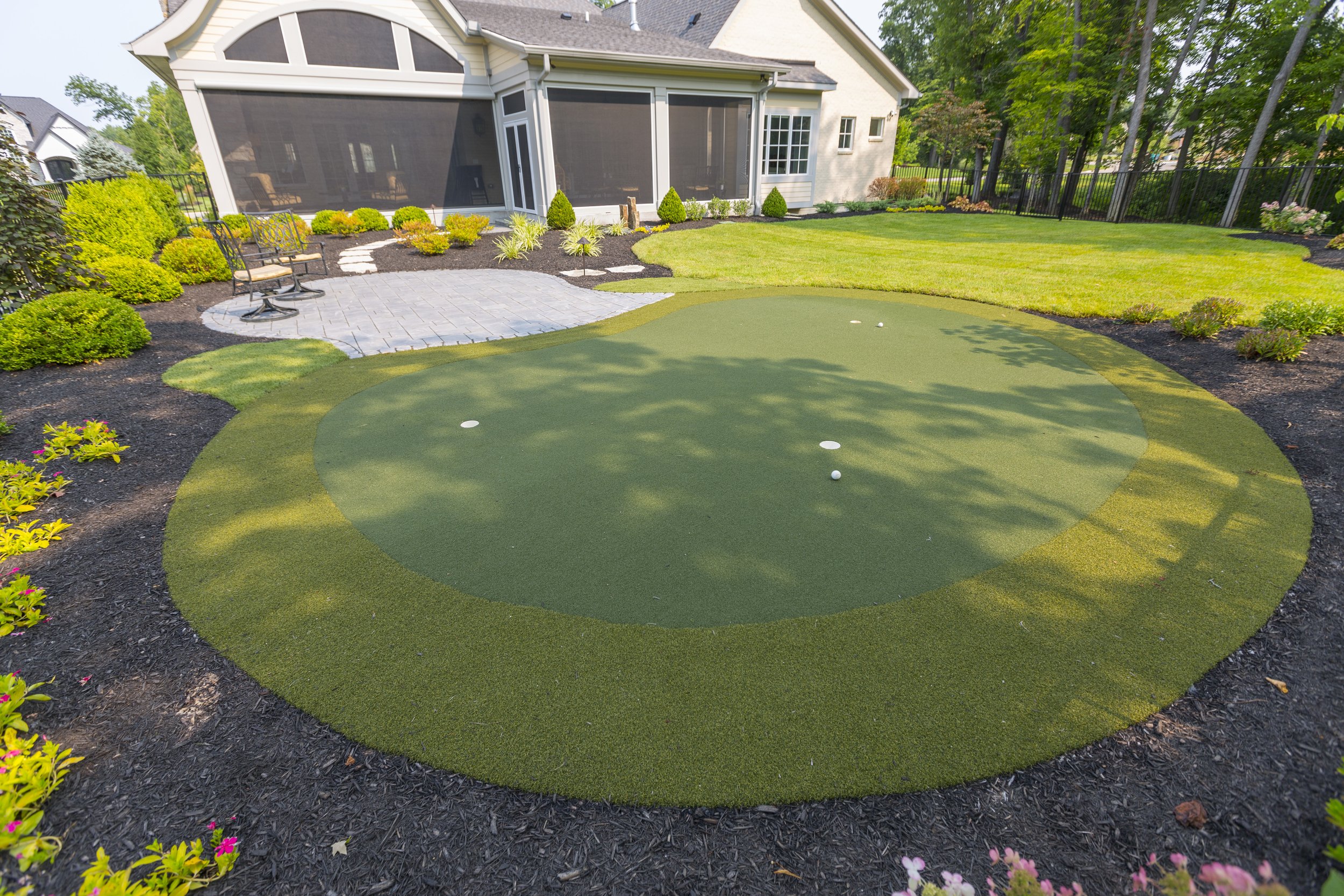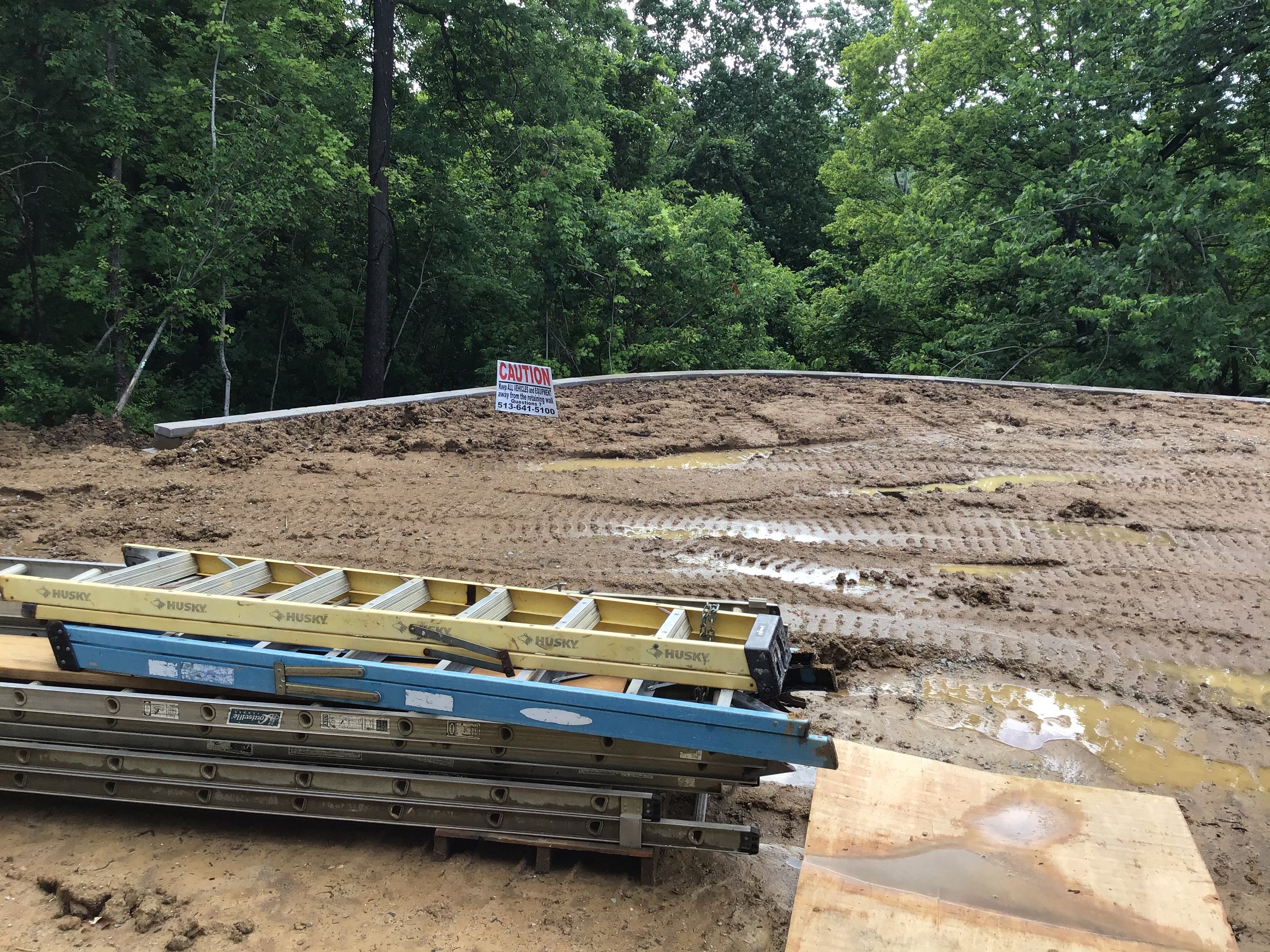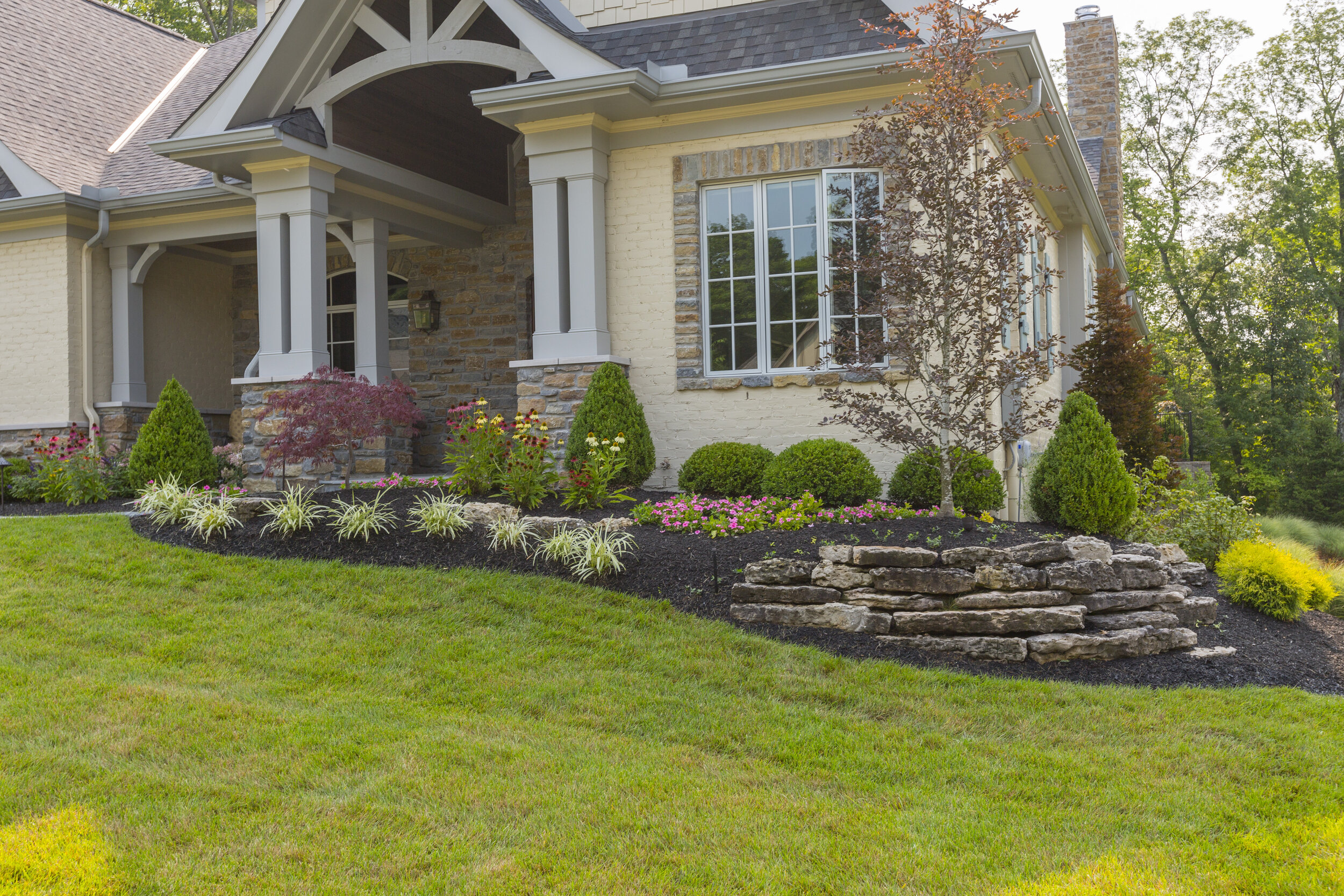The great outdoors are enjoyed around the globe by different people, cultures, and in different ways. Here’s a look at some popular outdoor living trends around the world, for inspiration for your own home.
Fun in the Sun: Pool Landscape Design
Ready for fun in the sun? Trust the pros at Seiler's Landscaping to design and install a pool deck that fits your yard and home. Choose from different styles, materials and accessories. Learn more here: https://www.seilerslandscaping.com/pools-fountains
Outdoor Fireplace and Fire Pit Design From Start to Finish
Transforming your landscape into a functional outdoor living space is an exciting endeavor. There are so many possibilities and elements to choose from. An outdoor fireplace or fire pit is a great way to upgrade your outdoor space and make it more functional and intimate. There are lots of things to consider when designing your outdoor fireplace and fire pit so we’ve broken them down for you.
The Best Patio Heaters for Your Outdoor Living Space
The nights are getting colder but you might still want to spend time in your outdoor living area. So what are your options for heating an outdoor space? We’ve put together a list of the best patio heaters for your outdoor living space.
Fuel Sources
As you start to look at your options, keep in mind that patio heaters operate on a few different fuel sources.
Propane: Propane heaters warm up spaces very quickly and are ideal for larger spaces. They are typically portable with wheels. Use caution, though: They should not be used in enclosed spaces where they might cause carbon monoxide buildup.
Natural Gas: Because they are connected to a home’s natural gas line, natural gas heaters are more permanent. They may require a licensed plumber to run a natural gas line to the patio. Natural gas is typically a less expensive power source compared to propane.
Electric: You won’t need to buy fuel for an electric heater but you will need to replace heating lamps occasionally. Because they have no open flame they are considered safer for some families. Most electric heaters will have a power cord so you’ll want to make sure you have outdoor outlets or plan to have an electrician install one in a good location before you buy.
Large Spaces
If you’re looking to heat a larger outdoor space, a propane heater is the way to go. This propane heater from AZ Patio Heaters provides you with a 10 to 12-foot diameter of warmth and has wheels for portability.
Photo Courtesy of AZ Patio Heaters
An alternative option would be a pyramid-style heater. It doesn’t heat quite as much space but it does spread the warmth more evenly.
Photo Courtesy of AZ Patio Heaters
Small Spaces
For smaller outdoor spaces, you may want to consider a tabletop heater. Table top heaters are typically secured to a patio table, usually where an umbrella would fit. They are easily portable and are great for smaller gatherings.
Photo Courtesy of AZ Patio Heaters
Electric Patio Heaters
Electric patio heaters are safe to use in enclosed spaces and have the option of being mounted on ceilings and walls so they take up less floor space. They are easy to use as you just plug them in and flip a switch.
Photo courtesy of BBQGuys.com
Electric heaters can also be freestanding and come in tabletop sizes as well.
Photo courtesy of BBQGuys.com
Best Patio Heaters and Safety
Some safety precautions come with the use of any heater powerful enough to warm a patio. Make sure your heater is away from walls, patio furniture and flammable objects in the case it tips over. Keep a fire extinguisher handy and never walk away with it still on. You’ll also want a cover to go over your heater when it’s not in use to keep bugs, dirt and debris from getting into it, which can cause fires.
Design Your Outdoor Living Space With Seiler’s
Want to design an outdoor living space with a heater? Contact us to get started on your plans.
Fore You! Designing a Home Putting Green
Thinking about installing a home putting green in your backyard? From size, to shape, to outdoor lighting, here’s what you need to know.
Size and Shape
The first thing you’ll want to do is measure the dimensions of the area where you want to install your putting green. Most residential putting greens are about 150 to 500 square feet. The size of your green will also depend on the number of holes you want to include. Remember, cost is typically calculated by square footage.
Home putting greens commonly come in circle, kidney bean or hourglass shape. If you also want to practice your short game at home, you’ll need to add a bunker or rough grass into your design.
Assessing the Site
It is important to take into consideration if the site of your putting green will need any work before it is installed. This could include levelling, filling or draining. Assessing your site and creating the ideal conditions for your putting green is part of the service Seiler’s is happy to offer. We can also help you decide what turf is right for you.
Seating, Style and Accessories
As you consider your home putting green design, remember to add all the creature comforts, both for the golfer and anyone just watching. A nearby patio, pergola or raised deck could offer a spot for spectators. In addition to seating, designing the landscape around your putting green will add to the overall look and experience. Do you want lots of color and greenery, or a more simple look? Do you prefer the putting green to be mostly shady or have ample sunlight?
Accessories like flags, putting cups and bunker rakes (if your green will include a bunker) are some fun aspects to consider as well. If you intend to putt around at night, you’ll want to install helpful outdoor lighting.
Ready to bring your putting skills to the next level? Contact us to get started on your home putting green.
New Home Landscaping Is Golfer’s Dream
A putting green is just one of the special elements of the full landscaping plan Seiler’s Landscaping did for this client who built a custom home in Maineville. New home landscaping provides a blank slate, which is always both challenging and exciting.
Speaking of challenges, because the home was designed in 2020, the landscape design process was all done virtually. Revisions made over video calls moved the design closer and closer to the homeowners’ dream of creating curb appeal in the front and beautiful outdoor living spaces around the home. In the end, we were able to present a plan that the homeowners truly loved.
“We wanted to make sure all the outdoor elements worked well with one another and complemented the beautiful stone and brick on the house,” said Will Seiler, president of Seiler’s Landscaping.
One major challenge was the steep slope of the site. Our plan for the landscaping included building a retaining wall to create a flat backyard space that would be perfect for the putting green. A curving bed and plantings soften the look of the stonework and blend the retaining wall with the sloping side yard.
A screened outdoor living area overlooks the level backyard, which is ringed with curving plant beds.
A cobblestone driveway and walkway to the side porch echo the home’s French country style. Special ordered from Canada, the cobblestone pavers create a charming look and make a memorable impression.
The client and Will Seiler share a love of golf, so creating a putting green right in this home’s backyard was an exciting project. A flagstone patio creates a spot to sit and watch the family golfers practice their short game.
Just outside the screened outdoor living space, a bubbling water feature appeals to the senses with textured rock columns surrounded by river rock, the sound and feel of splashing water and colorful pockets of seasonal plantings.
Along the side of the home, a stacked stone wall borders a bed and complements the stone accents around the windows and porch post supports.
Seiler’s landscape design for this new home included shrubs and perennials that thrive in the Cincinnati climate, select trees and LED lighting to make sure the home continues to shine after the sun sets.
A curved cobblestone walkway runs along the front of the home, adding even more curb appeal. “It takes a village to build a project like this,” Will Seiler says, praising everyone on the team from the front office staff to the construction foreman to the material acquisition point person to the crew.
From Design to Reality
Are you in the market for new home landscaping or ready to renovate your current landscape? We’d love to discuss your options in a free consultation. Contact us today.
Making Landscape Design Fun
One thing that might surprise you about the landscape design process? How fun it can be! The truth is that landscaping with Seiler’s is a way to flex your creative muscles, and the end result is an outdoor space you love.
Express Yourself
Get your creative juices flowing! The sky’s the limit in dreaming up your perfect landscaping space. A landscape project is a fun opportunity to bring your HGTV dreams to life by finding an aesthetic and vision that perfectly express your personality. It’s also a way to supplement your interests and hobbies: an outdoor kitchen for those who love to cook, a pocket garden for book lovers, shady exercise areas for fitness gurus and of course, gardens for those with green thumbs.
A landscape project means you get to explore the many color palettes and themes found in flowers, pavers, stone, furniture and other materials. Whether you’re looking for something modern, cottage-core, sophisticated, family-friendly or even a traditional English garden, this is the time to let your imagination roam.
Personal Planning Committee
After the dreaming comes the strategizing, an important step in the creative landscape process. Any great burst of ideas should be solidified with plans. Take pictures of any spaces you come across that you like as well as other elements like trees, furniture, walkways or walls that catch your eye. Create a modern-day mood board using Pinterest and Houzz to collect your favorite inspiration photos in one place. This is also a time to do some fun research. Drive around your favorite neighborhoods to get extra inspiration and ask your friends and family for any ideas.
An important part of this step is setting a budget and determining what all can be included within it. If one giant landscaping project seems a little overwhelming, consider a phased landscape design. Study your space to gain a deeper understanding of any patterns, including where the sunlight falls and for how long. Are there any shady spots or places where water pools after a bad rain? Also figure out how much maintenance you’re willing to do: If you want something low-maintenance, a pool may not be the best choice for you. Now is the time to set your dreams up for a successful reality.
Enter the Professionals
This is where we come in and keep the fun going. Show us around your yard and share your great ideas and photos with us. Be open to suggestions from us, including the best trees and plant life for local climates and ideas on what will and won’t work as envisioned. One of our experienced landscape design professionals will work with you to translate your vision to paper in an achievable plan. This is the time to ask lots of questions! Get a better understanding of what we’ll be doing and take the time to look over preliminary plans and see your ideas captured in a landscape plan. Remember that it’s much easier to change aspects in the design stage rather than during installation.
Take lots of “before” photos because the final step is watching your creation come to life. Our professional crew will make your ideas a reality, and you can start enjoying the fruition of your creativity.
Read to Get Started?
Already have ideas firing? If you’re ready to flex your creative muscles, contact us today to get started.
All Things Considered: The Key to Backyard Design
A truly amazing backyard starts with a truly amazing backyard design. But it takes a thorough and comprehensive approach to turn a landscape dream into a reality. From function to flow to furniture, here are the aspects we always consider when designing a perfect backyard for our clients.
Function First
The first question to ask is simple: What do you want from your space? Do you want to host social gatherings and parties with all your friends and family? Do you want a way to spend more time with your family? Maybe you want to “get away” in your own backyard with a space designed for tranquility and relaxation. Or maybe you want a designated space for your favorite hobbies like gardening.
The desired function of a backyard is an important base to any landscape design. For social gatherings, you might want a full outdoor kitchen and decked-out patio or maybe a pool and firepit perfect for parties. For family time, you’d want plenty of seating like an outdoor dining area. You might also look for plenty of open green space for kids to play or a grill island for long-weekend holidays. A “home away from home” would benefit from tranquil water features like a pond or a fountain. Additionally, a reading nook and some benches and pergolas would provide designated spaces to unwind. For those with a green thumb who love to garden, you could have flower beds and a storage shed on your must-have list. A shed would also come in handy for other hobbies, and a gazebo would be perfect for outdoor yoga and exercise.
It’s also important to know how involved you want your backyard to be. How much upkeep are you willing to do throughout the year? Pools have to be maintained and reopened every year and certain plants are more high-maintenance than others. Conversely, if you want beds that require less maintenance, consider perennial plants that come back every year and an easy-to-sweep deck or patio.
Not-So-Empty Space
The next step in backyard design is to take stock of the space, firstly the size. How much space do you have to play with? No one wants an overcrowded backyard, and it’s important to think about the size plants and trees will reach as they mature. Also keep in mind what’s already there. Is there an AC unit or dryer vent you want to cover up or a giant oak tree you want to keep as a focal point?
Equally important is how the natural elements interact with the space. Pay attention to how the sun moves throughout the day and which areas get direct sunlight and for how long. A dining area that gets full sun for six hours a day might be a little too hot at mealtime. Likewise, your designer will need to know the best places for plants and where to put your full-sun shrubs versus your partial shade flowers. If you’re looking to add some shade, consider the best shady trees. Understanding prevailing winds in your backyard will help avoid placing your amazing firepit in a particularly breezy area.
Backyard design on a sloped site calls for additional forethought. A hillside could benefit from retaining walls, which can also create a focal point of your favorite plants. Take note of any areas where water collects and consider adding some way of drainage. If you live near a busy road or have close neighbors, you can add some needed privacy with hedges or fencing.
A Natural Flow
For an amazing backyard design, flow and focal points are vital. Not only should the design itself flow, but it should flow from inside your house to your yard. Consider your home’s exterior and match it. Contemporary, traditional, lavish, rustic — any and all of these styles can be complemented with a stunning backyard.
The best way to flow from one area to another is through paths. These can be paved or tiled to match your aesthetic, or go for a more natural look with stepping stones or crushed gravel. If you want to continue a natural look, utilize curves in your flower beds and other design choices. Straight lines make for a cleaner look and help draw the eye to focal points.
A great backyard is not only useful and practical but also a space that people enjoy looking at and using. Focal points allow for a cohesive look and highlight the thoughtful design. Consider the space as a whole and ensure one really amazing backyard rather than disjointed sections.
Before You Start
If you’re environmentally minded, a backyard can incorporate sustainability in its design. This includes planning water conservation and minimizing runoff as well as planting pollinator-friendly and native plants.
Before bringing the design to life, it is critical to ensure everything can happen according to plan. This means following local codes and regulations as well as checking that you won’t run into any electric, gas or other utility lines.
An Eye for Perfection
All of these factors go into Seiler’s thoughtful backyard designs for our clients. From timeless English gardens to modern outdoor kitchens and tranquil reading nooks to exciting pools, any dream can go from design to reality.
If you already have some design ideas for your backyard, contact us today and let’s talk about all your options.
Outdoor Living Trends for 2021
Spring is finally here and summer is just around the corner. A little rain can’t keep us out of the yard! Looking forward to spending some time outside soaking up vitamin D? Read about the hottest trends in outdoor living.
Outdoor Kitchens
Cooking and eating outside is a great way to spend a little more time outside each day. You might also be able to invite more people over once restrictions on gathering are lifted. Save money by cooking and entertaining at home.
You can decide how complete you want the space to be. A variety of appliances are perfect for outdoors like a grill, cooler, refrigerator, pizza oven, table or bar.
If you have limited outdoor space, you can use a bar cart to easily move things outside. You can also have a fold-up table.
Privacy
Most of us have spent more time at home in the past year than any year before. Consequently, we have learned to make use of every square inch of space on our property. People are bringing the indoors outside, and with that comes the need for privacy. No one wants a nosy neighbor watching you do your morning yoga or the hot sun beating down on you for hours on end. More and more people are turning to solutions to increase the privacy of their backyard oasis, including covered patios and plant barriers.
Covered patios and pergolas are “hot” trends that can keep you cool. Bioclimatic pergola systems are a unique feature to add to your outdoor living space. The Axis Smart Glass Bioclimatic System by Suntech-Albayrak Group won the 2021 IBSx Award for Best Outdoor Product.
Tall plants, like hedges, placed around the edges of a yard create a natural fence. They can also block off just a portion of the yard with a patio or pocket garden. For those with smaller spaces to work with, sheltered side yards work just as well. Other options include living walls, curtain screens and trellises.
Outdoor Offices
Hybrid and remote work have taken precedent for businesses today. Having an office space outside prevents feelings of being cooped up inside a stuffy house, especially during the beautiful, albeit hot, summer months. The best place to create these spaces is at the back of the house with direct access to the patio and yard. Cubicles are about 6 feet by 6 feet, so if you can afford that much space you can create an outdoor office.
Important pieces to have are a seating area and table. Make sure they are built to withstand outdoor weather conditions. Relevant decorations include lighted cubes, portable rechargeable lanterns and outdoor speakers. Just be sure to not leave any important papers or electronics outside if the area isn’t covered! An awning or covered patio can keep your space out of the elements. Adding amenities like water features or fans reduce outside noise, and adding plants makes the area more calming.
Garden office “pods” or sheds are another option, although more labor intensive. An 8-by-10-foot space is suitable for an outbuilding. The best part? No traffic on your commute! It’s just one reason these work sheds or pods are one of the top outdoor living trends for 2021.
Backyard Cottages
You might have heard of a “she shed,” but how about taking it to another level with a whole cottage outside? They are also called accessory dwelling units (ADUs) or “granny flats.” Make sure to check with your local building codes before designing.
You can use the space to house older relatives or adult children needing a home, or simply create an outdoor retreat to escape the mess of the main house. Other uses include study spaces, spare living suites, home offices, gyms or meditation studios. The primary use of the space will determine the decor you need.
Complementing the building with greenery will help it flow visually in the backyard. With a new build, you can fully customize the style of your cottage or you can purchase a prefabricated unit. One of the walls can be all windows to allow for a view of the garden. Having AC or fans will keep you comfortable inside.
Your Favorite Outdoor Living Trends 2021
What would your dream outdoor living space look like? Seiler’s Landscaping specializes in creating award-winning landscapes for everyday moments. Contact us today to bring the inside out.
Designing a Pocket Garden for Reading
“A book is like a garden carried in the pocket.”
—Chinese proverb
Pocket gardens take up little space but can make a big impact in your yard. If you have a small area to work with or simply want to create a cozy nook for escaping with a good book, consider incorporating a pocket garden for reading into your landscaping. These quaint spaces will give you stories to explore every time you step foot outside.
What Is a Pocket Garden?
Pocket gardens are perfect for small spaces. They feature patches of plants in tight areas. They might be a necessity if you feel like you live on a postage stamp and need to break up the space. Or, if you have a larger yard, you can opt for smaller spaces to create a cozy atmosphere and a variety of themes throughout your yard.
Also called literary or Shakespeare gardens, the nooks they create are perfect spots for reading.
Make a Plan
The first step in creating a pocket garden is to create a plan. A crucial piece of information for the plan is who will be using it. Will it just be for you to sneak away from the world? Or does your whole family need to fit in the nook? The garden can be adapted either way. The more people to fit, the bigger the space needs to be.
Deciding where in your yard to locate the garden is another crucial factor in planning. You might keep it away from your patio or other outdoor living space so that those areas don’t feel crowded. If you’d like to maintain open space for kids to play, your pocket garden for reading probably shouldn’t be right in the middle of the yard.
Consider sun exposure in various areas because that determines what type of plants will work best. For example, most succulents need a decent amount of sunlight, but ferns can handle shady spots. Choose areas that could use some sprucing up with more color or texture. Areas of the yard that you already find relaxing are good places to start. Consider other existing features like steps or pathways, too. Putting plants in between rocky steps is a unique touch, and pocket gardens that appear at the end of a meandering path are a whimsical addition to any yard.
Create a Theme
A common practice with pocket gardens is establishing a theme. If you have more than one pocket garden, you can incorporate multiple themes into your yard. A few possible themes include edible gardens, butterfly gardens, moon gardens, tropical gardens and native gardens. The plants and decor you choose will help make the space fit the theme. You can also design the space based on your favorite book or author. Does the main character spend her afternoons pondering life while pruning roses? Does the chef at the protagonist’s local diner use home-grown garnishings?
For help with planning a pocket garden, consider partnering with a landscape designer for guidance.
All the Fixings
The plants you and your designer choose to incorporate should require little maintenance and not pose a threat of invading. They should act as foils for one another, contrasting in color and height so each selection stands out. Succulents are a great choice for your garden because they can grow in tight spaces; they also don’t require much watering. The design should take plants’ blooming seasons into account so the garden has life all year long. One rule of thumb for design is to aim for 80 percent flowers and 20 percent grasses.
Since you will use this garden for reading, you will want it to be a quiet space. Consider adding a barrier around your garden with hedges, trellises or tall planters. Soft surfaces will absorb sound, so plant lots of flowers with textured surfaces. If the sound of trickling water is calming to you, consider adding a water feature. This will add peace to the space and distract you from the distant noise of traffic or neighbors.
Don’t forget to incorporate lighting so that you can read any time of the day. Outdoor string lights are a fun feature if you have a wall, fence or tree to hang them from. Landscape lights can be incorporated along the ground to illuminate plants and the space you are relaxing in. You can also have a small table and reading lamp, if the size allows.
Having comfortable seating is crucial for a space meant to bring relaxation. Rustic options such as twig furniture or a retro glider are popular. Or you can add a simple outdoor chair or bench. Leopold benches have a minimalist design that won’t detract from the colorful blooms around you. Swings are a fun option, as well. Don’t forget the cushions to keep you comfortable.
Your Landscape’s Next Chapter
Pocket gardens are a great feature if you want to take your love for reading outside. For help bringing the Bard to your yard, please contact us online or call (513) 791-2820.
